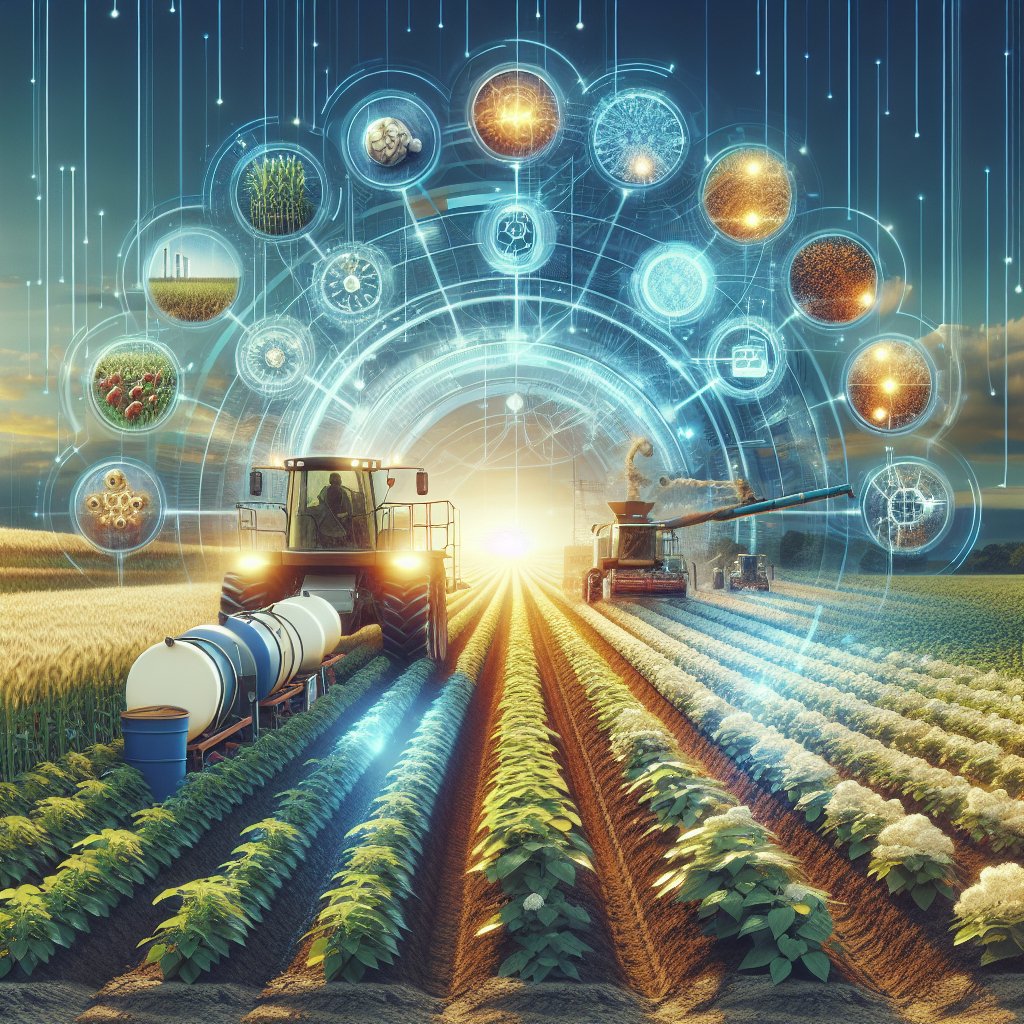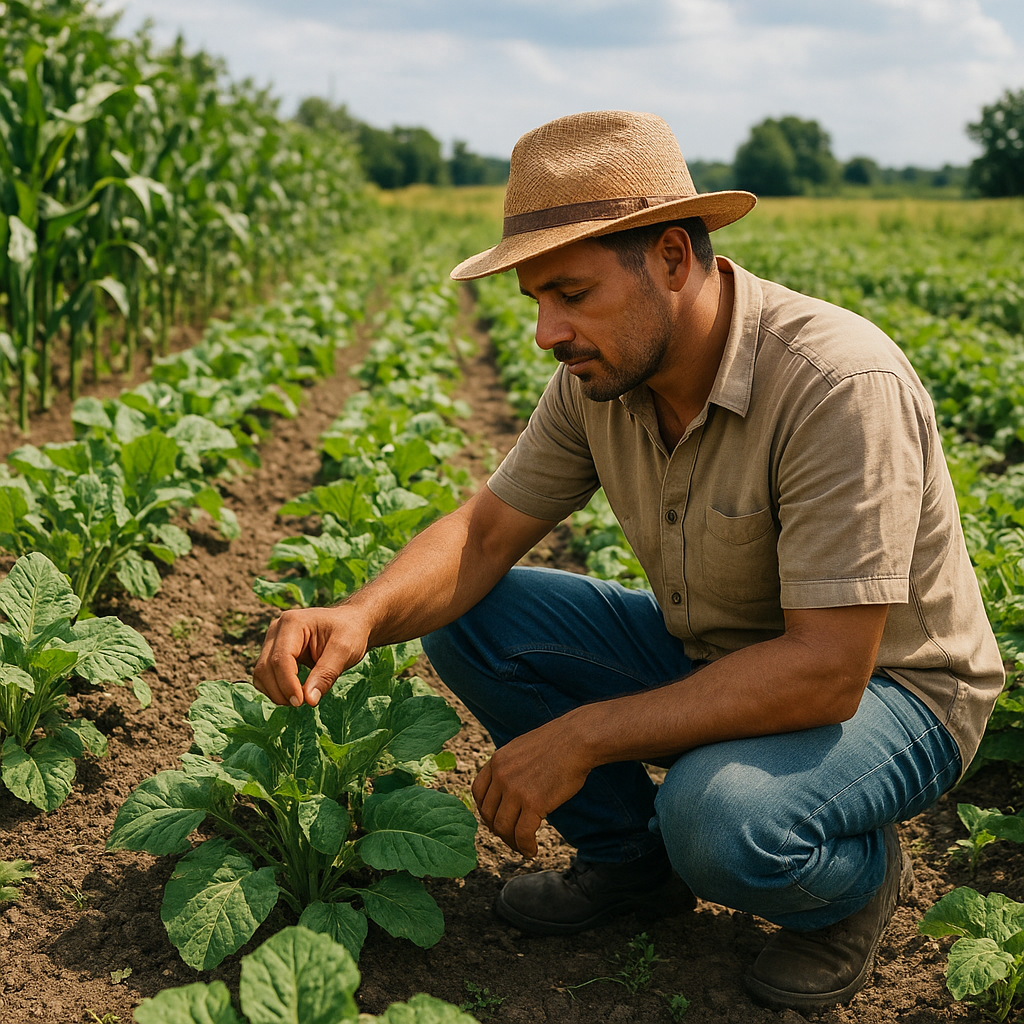
Integrated Pest Management (IPM) is a sustainable approach to managing pests that combines different management strategies and practices to grow healthy crops and minimize the use of pesticides. This method has gained significant attention in the agricultural sector due to its numerous benefits, including environmental protection, economic savings, and improved crop yields. In this article, we will explore the various advantages of implementing IPM on farms and how it contributes to sustainable agriculture.
Environmental Benefits of Integrated Pest Management
One of the most significant advantages of Integrated Pest Management is its positive impact on the environment. Traditional pest control methods often rely heavily on chemical pesticides, which can lead to several environmental issues, such as soil degradation, water contamination, and harm to non-target species. IPM, on the other hand, emphasizes the use of environmentally friendly practices that reduce the reliance on chemical inputs.
By incorporating biological control methods, such as introducing natural predators or parasites to control pest populations, IPM helps maintain ecological balance. This approach not only reduces the need for chemical pesticides but also supports biodiversity by preserving beneficial organisms in the ecosystem. Additionally, IPM practices like crop rotation and intercropping can improve soil health and reduce the risk of pest outbreaks, further minimizing the environmental footprint of farming operations.
Moreover, IPM encourages the use of mechanical and physical control methods, such as traps and barriers, which are less harmful to the environment compared to chemical treatments. These methods can effectively manage pest populations without causing long-term damage to the ecosystem. By prioritizing sustainable practices, IPM contributes to the conservation of natural resources and promotes a healthier environment for future generations.
Economic Advantages of Integrated Pest Management
In addition to its environmental benefits, Integrated Pest Management offers significant economic advantages for farmers. One of the primary goals of IPM is to optimize pest control strategies to achieve effective results while minimizing costs. By reducing the reliance on expensive chemical pesticides, farmers can lower their input costs and increase their profit margins.
IPM promotes the use of cost-effective pest control methods, such as biological control agents and cultural practices, which can be more affordable than chemical treatments. For instance, using natural predators to control pest populations can be a one-time investment that provides long-term benefits, whereas chemical pesticides often require repeated applications. This shift towards more sustainable practices can lead to substantial savings for farmers over time.
Furthermore, IPM can enhance crop yields and quality by reducing pest damage and promoting healthier plant growth. By implementing a combination of pest management strategies, farmers can effectively control pest populations and prevent significant crop losses. This not only increases the quantity of produce but also improves its quality, leading to higher market value and increased revenue for farmers.
Another economic benefit of IPM is its potential to reduce the risk of pest resistance. Over-reliance on chemical pesticides can lead to the development of resistant pest populations, which can be costly and challenging to manage. By diversifying pest control methods and reducing the use of chemicals, IPM helps prevent the development of resistance, ensuring the long-term effectiveness of pest management strategies and reducing the need for costly interventions.
Social and Health Benefits of Integrated Pest Management
Integrated Pest Management also offers several social and health benefits, contributing to the well-being of farming communities and consumers. By reducing the use of chemical pesticides, IPM minimizes the exposure of farmers and agricultural workers to potentially harmful substances. This can lead to improved health outcomes and a safer working environment for those involved in farming operations.
For consumers, IPM can result in safer and healthier food products. By minimizing pesticide residues on crops, IPM ensures that the produce reaching the market is of higher quality and poses fewer health risks to consumers. This can enhance consumer confidence in agricultural products and promote healthier dietary choices.
Additionally, IPM can empower farming communities by promoting knowledge sharing and collaboration. The implementation of IPM often involves training and education programs that equip farmers with the skills and knowledge needed to effectively manage pests. This can lead to increased self-reliance and resilience among farmers, enabling them to make informed decisions and adapt to changing environmental conditions.
Moreover, IPM can foster community engagement and cooperation by encouraging farmers to work together to address pest management challenges. By sharing resources and knowledge, farming communities can develop more effective and sustainable pest management strategies, leading to improved outcomes for all stakeholders involved.
Challenges and Future Prospects of Integrated Pest Management
Despite its numerous benefits, the implementation of Integrated Pest Management is not without challenges. One of the primary obstacles is the need for comprehensive knowledge and expertise to effectively implement IPM strategies. Farmers may require training and support to understand the principles of IPM and how to apply them in their specific contexts.
Additionally, the initial transition to IPM can be resource-intensive, requiring investments in training, monitoring, and the adoption of new practices. However, these initial costs can be offset by the long-term benefits and savings associated with IPM.
Another challenge is the need for ongoing research and development to improve IPM strategies and adapt them to different agricultural systems and pest pressures. Continued investment in research is essential to develop innovative solutions and ensure the effectiveness of IPM in diverse farming environments.
Looking to the future, the prospects for Integrated Pest Management are promising. As awareness of the environmental and health impacts of traditional pest control methods grows, there is increasing interest in sustainable alternatives like IPM. Advances in technology, such as precision agriculture and digital tools, can further enhance the effectiveness and efficiency of IPM practices, making them more accessible to farmers worldwide.
In conclusion, Integrated Pest Management offers a holistic and sustainable approach to pest control that benefits the environment, economy, and society. By reducing the reliance on chemical pesticides and promoting diverse pest management strategies, IPM contributes to the long-term sustainability of agricultural systems and the well-being of farming communities. As the agricultural sector continues to evolve, the adoption of IPM will play a crucial role in shaping the future of sustainable agriculture.

